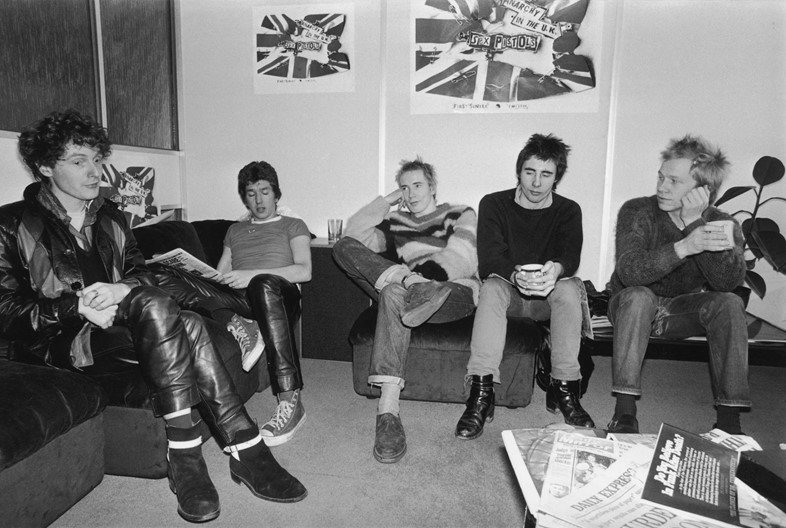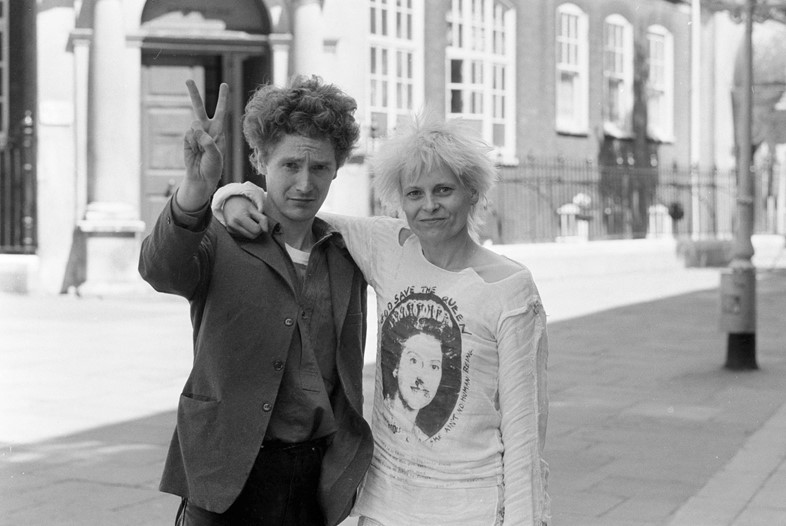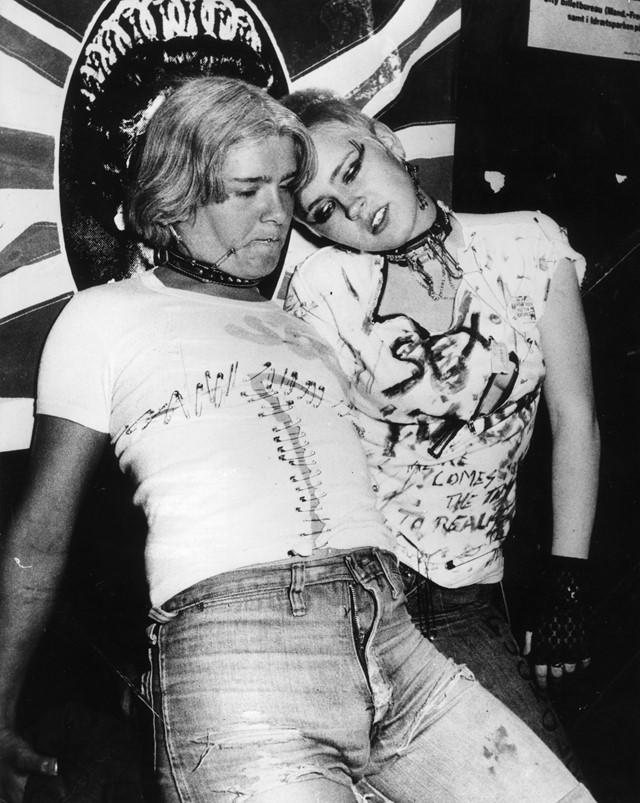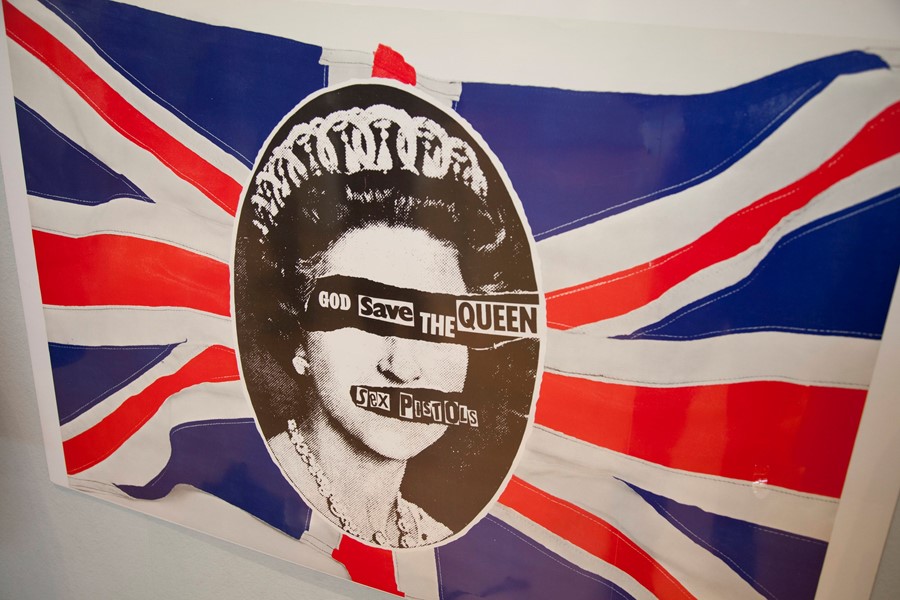As the pioneering artist passes away, we look back on his scandalous Sex Pistols album cover that came to define British punk forever
“I hate labels,” Jamie Reid once said, preferring to let his actions speak for themselves. With Reid’s passing on August 8, it became abundantly clear mere words could never contain a man of multitudes such as he. Artist, anarchist, activist, iconoclast, punk, rebel, hippie, romantic, shaman, socialist, druid – Reid was living proof the whole of a man is greater than the sum of his parts.
Most famously, Reid was the de facto art director of the Sex Pistols, designing their iconic 1977 album cover, Never Mind the Bollocks, Here’s the Sex Pistols, and singles Anarchy in the UK, God Save the Queen, Pretty Vacant, and Holidays in the Sun – which resulted in claims of treason, censorship, and an obscenity trial, to say nothing of a vicious assault by a gang who broke Reid’s leg for merely wearing a T-shirt with the design while walking down the street.

Nevertheless, Reid maintained his stance on the right side of history. Born and raised in Croydon, south London in 1947, Reid was raised by a family of socialists with a long history of druidism. He devoted himself to fighting against racism, the criminal justice system, and nuclear weapons, combining his passion for activism with his practice of art.
After graduating from Croydon Art School in 1970, he did a five-year stint publishing the Suburban Press, a radical magazine supplying anarchists and marginalised groups with tools to carry the revolutionary spirit of the 1960s Situationists into a new decade. “We couldn’t really afford things like Letraset, so it seemed natural to cut things out and do collage, to save money,” Reid said – revealing the roots of an aesthetic that would revolutionise the world.
In 1976, Reid received a telegram from his old art school chum Malcolm McLaren to create graphics for a new band he was managing called the Sex Pistols. Envisioned as both a band and an art movement, McLaren brought together four local youths – John Lydon, Glen Matlock, Steve Jones, and Paul Cook – that hung out at SEX, the King’s Road fetish shop he ran with partner Vivienne Westwood.
Reid returned to London and quickly got to work, applying his signature style of collaging letters clipped from newspaper headlines that suggested the sinister hand of a ransom note. Reid also drew from the Dadaist practice of photomontage, following in the tradition of Hannah Höch, George Grosz, and John Heartfield to take down fascist leaders perpetrating as symbols of European civility.

As fate would have it, the Queen’s Silver Jubilee would be held in June 1977 and to celebrate, the Pistols released God Save the Queen on May 27. Subverting the British national anthem, the Pistols called out Queen Elizabeth II, saying the quiet part out loud and giving voice to a generation of disaffected youth. Reid deftly appropriated Cecil Beaton’s Jubilee portrait, using décollage to tear away the Queen’s eyes and mouth, and in their place placing the song title and band name.
The image was such a scandal, workers at the pressing plant laid down their tools and initially refused to print the sleeve. Meanwhile, the BBC banned the song, and major retailers refused to stock it. Despite the establishment’s efforts, God Save the Queen peaked at #2 on the charts the week of June 7; it may very well have been #1 had the sales from Virgin Megastore been included in the count.
Reid created multiple versions of God Save the Queen, including placing a safety pin through the monarch’s lips and a swastika in her eyes, as well as the now iconic image of her against a tattered Union Jack, which has also been used as the visuals for Anarchy in the UK. On October 28, the band released their long-anticipated LP Never Mind the Bollocks, Here’s the Sex Pistols, with a simple yet lurid album cover that resulted in a Virgin Records shop owner in Nottingham facing obscenity charges in court. Against a queasy yellow background, the title appears in three fonts: all black but for the ‘Sex Pistols’ in neon pink.

The charge of obscenity came from the public display of a single word: bollocks, slang for testicles but also a legitimate old English term, properly used in the context of the title to mean “nonsense”. Pistols guitarist Steve Jones inadvertently coined the title, meaning just that, in an effort to put an end to the squabbling about what they should name the album. The court reluctantly sided with the Pistols, charges were dropped, and Reid’s iconoclastic designs came to define British punk forevermore. Tellingly, Reid had no interest in the art world, maintaining his position as an outsider throughout his life, and using his talents in the service of the people rather than the one percent.
“Radical ideas will always get appropriated by the mainstream,” Reid told Another Man in 2018. “A lot of it is to do with the fact that the establishment and the people in authority actually lack the ability to be creative. They rob everything they can … You always have to move on, and move on, and move on.”
